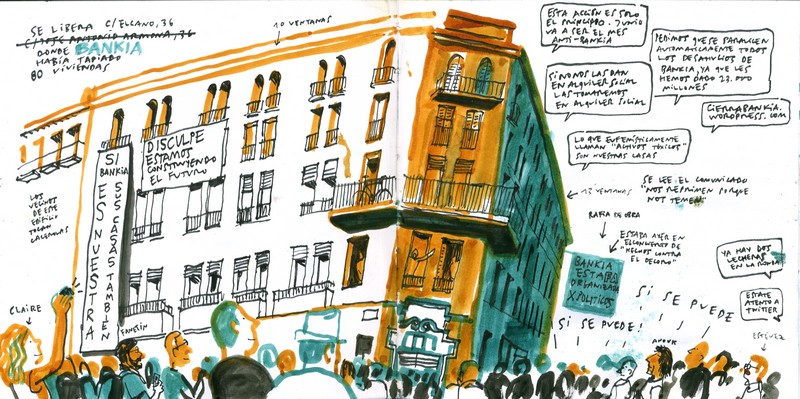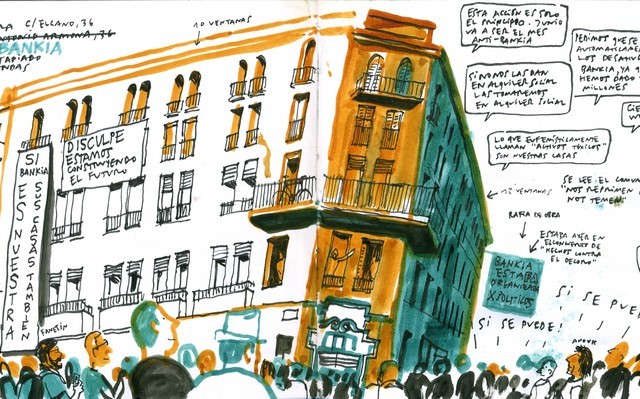What is a neighbour? Notes on #Occupying the urban relation
We just finished a new draft paper on the Spanish #Occupy movement, the 15M or indignados movement. We have submitted it to the journal HAU, the titled is What is a neighbour? Notes on #Occupying the urban relation, here is the abstract:
The Occupy movement in Spain, locally known as the May 15 movement (15M), singularly developed throughout 2011 into a network of local neighbourhood ‘popular assemblies’. Over one hundred such assemblies cropped up in Madrid alone. This paper explores the conceptual and infrastructural work invested by the assemblies in the production of a particular experience of ‘neighbourhood’ (barrio). The barrio has become the centrepiece of the assemblies’ political and geographical imagination. We offer here an ethnographic account of how the work of assembling (inside and outside the assembly form proper) is constitutive of a new experience of relationality, which assembly-goers refer to as ‘making neighbours’. One makes neighbours through processes of deambulation, and through an investment in the rhythmic and atmospheric production of space. The neighbour fares thus as an ‘atmospheric person’. Further, it has in this guise become both a model of and a model for political citizenship; and neighbourliness, in this light, a ‘right to the city’. People’s exploration of the question, ‘What is a neighbour?’ offers thus an ethnographic case study on the invention of novel forms of social relations and political values in an urban commons – on the rise of the urban persona of the neighbour as a social-cum-political experimenter.

Watercoloru by Enrique Flores. Demonstration against foreclosures by Bankia (a bank nationalised on May 2012) in Lavapiés. Enrique Flores, http://www.4ojos.com/blog
We want to express our sincerest gratitude to the members of Lavapiés’ Popular Assembly, as well as related 15M collectives and initiatives. Our time amongst them has deeply shaped our understanding of the making of contemporary urban commons in Madrid. This article is only possible thanks to them. We want to thank Daniel Bobadilla and Enrique Flores for giving us permission to illustrate the article with their photos and watercolours. Our thanks, too, to Ton Otto and Rane Willerslev, who commented on a first draft of the text and offered valuable advice as to how to sharpen its theoretical remit. Conversations with participants at the Anthropology of Value workshop convened by Tom Otto and RaneWillerslev in Cairns on December 2011 were also instrumental in helping identify the strengths of our empirical material. The pre-print paper is published under a Creative Commons license of the type Attribution-ShareAlike, so you are free to Share (to copy, distribute and transmit the work), to Remix (to adapt the work) and to make commercial use of the work.


